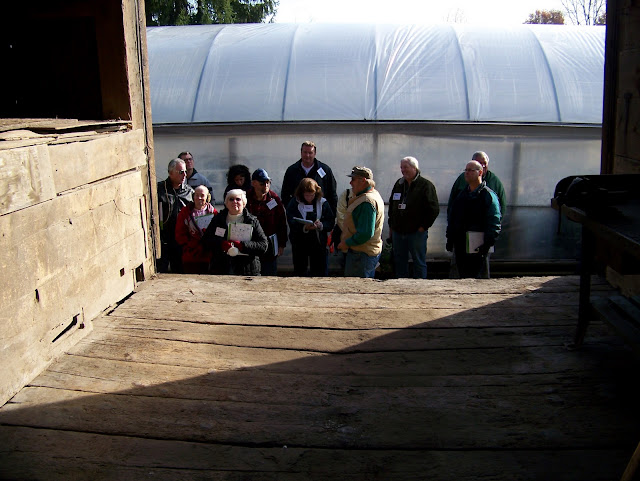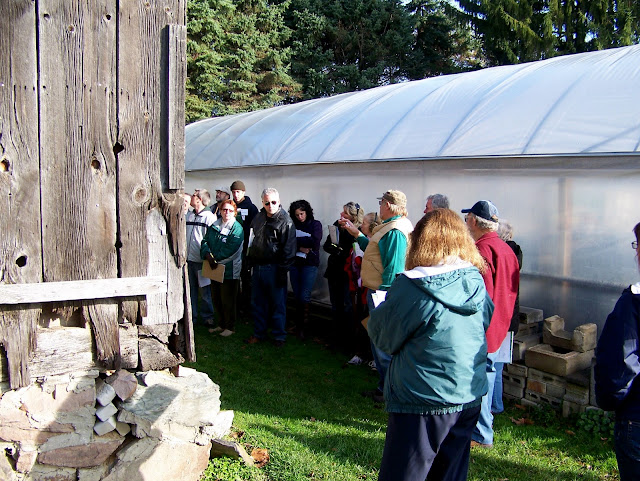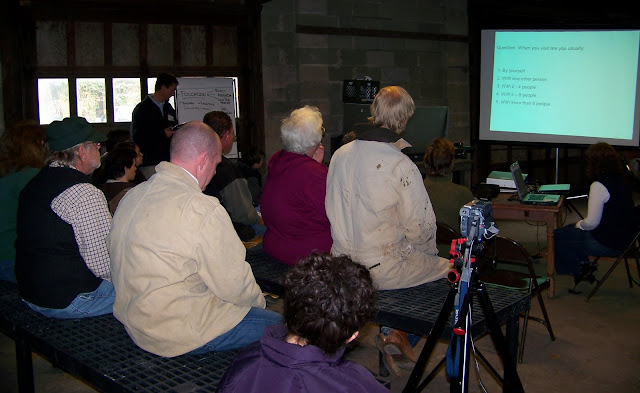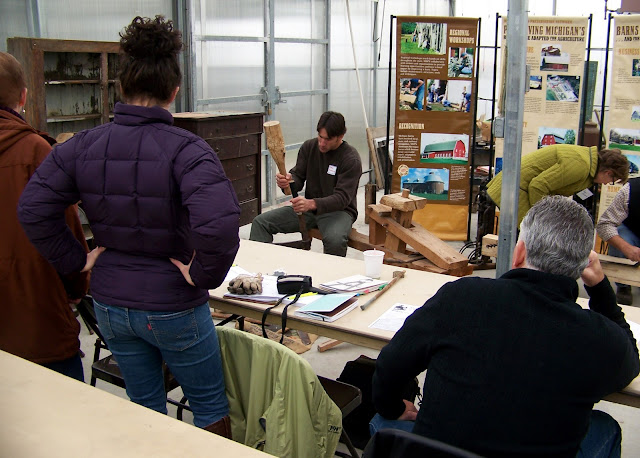National Park Service Expanding Reach Into STEM

Sixth graders from Terman Middle School meet with their instructor at the beginning of the day during a weeklong residential field-science program run by NatureBridge.
—Ramin Rahimian for Education Week
Agency plans to reach a fourth of U.S. students
Dense fog is slow to abate on this recent morning, as more than 200 6th graders scatter into small groups on the site of an old military camp in California's Marin Headlands outside San Francisco. They are a mix of moods—eager, hesitant, hyperactive, and sleepy—as they begin their first full day at
NatureBridge, a residential environmental field-science program in partnership with the
National Park Service.
The program, in its 40th year, has served close to 1 million children from all over the country at four national parks on the West Coast: Yosemite, Olympic, Golden Gate, and the Santa Monica Mountains. This coming spring, the program will expand to the East Coast, with the help of a $4 million grant from Google Inc., to set up camp in the Prince William National Park, about 40 minutes outside the nation's capital.
NatureBridge's continued efforts to engage children in science at some of the country's most beautiful sites comes alongside a national push to improve the quality of STEM—or science, technology, engineering, and mathematics—instruction, in light of U.S. students' lackluster test performance compared with many of their international peers'. In the most recent round of the federal Race to the Top competition, for instance, the seven finalist states are required to highlight how the plans submitted in their original proposals will improve and enhance the quality of STEM education in their schools.
The increased attention to STEM has focused in part on how to improve student interest in learning about these subjects and pursuing careers in the fields later on. Hands-on learning experiences, like those NatureBridge and the National Park Service use, are seen by some as one solution. Yet in a time of tight resources and high-stakes testing in education, such programs also face a challenge in vying for funding and proving their legitimacy.

Terman Middle School 6th graders Nicole Nemychenkov, left, and Andy Pan examine insects found in pond water at NatureBridge in the Golden Gate National Recreation Area. For more than 40 years, NatureBridge has instructed students in field science and environmental education in Yosemite, Olympic, Golden Gate, and Santa Monica Mountains national parks.
—Ramin Rahimian for Education Week
"To improve environmental literacy and attract more kids to explore STEM careers, we as a society need to shift attitudes and expand the knowledge of young people through broader and more engaging programs that teach kids about key issues," said NatureBridge Executive Vice President Jason Morris. "This work is never going to be scaled by NatureBridge alone offering environmental education programs in all places. But we can demonstrate the viability of these types of programs and ensure we maintain cutting-edge and relevant programs that embrace and evolve with the changes in the field."
Unaware of Learning
A group of 16 of the 6th graders breaks off with NatureBridge instructor Pete Demyanovich, who will guide them through the week. Each campus, while geographically distinct, follows NatureBridge's core education framework for inquiry-based science: developing students' sense of environmental awareness, connections to the natural world, and stewardship for the places they live in.
But each session, for each school, is different, tailored to the age, the grade, and the goals of the particular school.
For
Terman Middle School, a public school in Palo Alto, Calif., the goal this week is not merely to improve students' understanding of earth science, but also to develop and build a more cohesive 6th grade in the 660-student school. Prior to arrival at NatureBridge, teachers spent hours setting up small groups that transverse social circles, socioeconomic classes, and ethnic boundaries. Throughout the day, activities focus on connecting these students with one another, many who had not met prior to this week.
After a few rounds of icebreakers and a lesson on plate tectonics, Mr. Demyanovich's group creates interactive skits to illustrate the scientific principles just learned. Later, the students figure out how to cross an imaginary pool of lava in a team-building activity. At lunchtime, they sit in a circle to make sandwiches, ensuring "no trace" of trash, or even crumbs, is left behind. In the afternoon, group members pair off to collect water samples and organisms from a nearby pond for a lab activity later in the day.
According to Mr. Demyanovich, a former classroom teacher, one of the features that sets the program apart from classroom learning is that the children are engaged and learning science without being aware they're learning. Even the "quiet kids" come out of their shells and participate, he said, the classroom hierarchies and politics erased.
Hands-on science education is fundamental to improving "geo-literacy," or understanding the connections between actions and impact in the ecosystem, said Daniel Edelson, the vice president of education for the
National Geographic Society, which has helped support NatureBridge through evaluation, advice, and funding through its foundation. Students have to learn through real experiences, he said, not just textbook learning.

Students write about their observations in field journals after viewing insects under microscopes during an afternoon in the lab on the NatureBridge campus in Sausalito.
—Ramin Rahimian for Education Week
"In creating schools that are optimized for academic learning, we've created environments that interfere with learning about the natural world," said Mr. Edelson, who was also a member of the education advisory council that helped NatureBridge devise its core education framework. "We need to create opportunities for students to learn about the environment through firsthand experiences. This means getting them out of school buildings in order to observe and experience the natural world."
Making Connections
As interest in STEM education rises nationally, there seems to be a particular focus on science. Efforts are under way to develop common standards in the subject. (All but four states have already adopted the common-core state standards in mathematics .) But there's not only heightening attention to science learning itself, but to instruction that builds students' understanding of the connections between science and the environment.
The U.S. Department of Education this fall announced it would recognize exemplary schools that actively promote environmentally friendly practices and encourage students' environmental literacy through the new Green Ribbon Schools program. A group of environmental education experts also plans to release a framework next year to guide assessments of students' environmental literacy, and by 2015, the Program for International Student Assessment, or PISA, will even include an optional exam on the subject.
The National Park Service and its partner providers may be leaders in promoting that literacy. A memorandum of understanding is currently in the works between the Education Department and the U.S. Department of the Interior, which manages the National Park Service, to collaborate on education goals around teacher development and STEM, among other subjects, using outdoor classrooms and spaces.
That comes on the heels of the Park Service's release of a five-year strategic plan, which will guide the agency to its 100-year anniversary in 2016 and into the next century. The plan relies on no additional public funding, but instead, focuses on improving services and program quality and refocusing target audiences.
Expanding Access
A major component of the plan is to expand education programs for a quarter of America's schoolchildren through real and virtual field trips, teacher professional development, and more partnerships with organizations like NatureBridge to provide programs at their 394 parks or similar sites. Park Service leaders hope to supply free transportation to nearly 100,000 students annually and leverage digital learning and social media as a way to reach more children.
That means children in New York City, for example, could use Skype to virtually explore the kelp forests in Southern California's Channel Islands or see the ins and outs of a historic Nebraska homestead, said Julia Washburn, the Park Service's associate director for interpretation and education. Lesson plans for teachers to use in conjunction with parks and historic sites, large and small, are also being expanded for the Park Service's website. The aim is to provide access to the parks for students who may not be able to participate in programs like NatureBridge because of limited access to locations or funding.

Andrea Garcia-Milla, a 6th grader at Terman Middle School, brings back a water sample from a pond during a week at NatureBridge in Sausalito, Calif. The National Park Service is expanding its education programming.
—Ramin Rahimian for Education Week
"The benefits of multiday, residential, outdoor education programs are very well documented and well embraced, but they are expensive to provide and require a lot of resources," Ms. Washburn said. "This means they are typically a deeper experience for fewer kids. Shorter single-day, field-trip experiences are less expensive, and can serve more students, but their impact, while still beneficial, isn't as great."
Late in the afternoon, students take their pond samples to the microscope lab to look for and identify insects, which they sketch in their NatureBridge field journals. For a number of students, it's their first time using microscopes. A typical science class back at school, a few casually mention, is reading assigned paragraphs out of a textbook.
Despite the growing attention to STEM, in many places, the quality of science instruction has been found lacking.
A recent
report from WestEd, a San Francisco-based research organization, found that 40 percent of California elementary teachers surveyed said they devote 60 minutes a week or less to science. The quality of science instruction in most schools was subpar, the report found, mainly because of poor instructional materials, ill-equipped teachers, and a lack of assessments—factors attributed in part to budgetary pressures and deemed to be common nationwide.
Given today's fiscal realities, justifying the importance of programs like NatureBridge could get more difficult. The Park Service, for one, faced its first federal cuts in years and may have to reduce programs in the future. NatureBridge, which operates as a nonprofit, currently provides funding to more than a third of participants. Many schools do their own fundraising to pay for the program, including Terman Middle, which raised $6,000 through the local PTA to pay for the students' attendance.
Although participation hasn't declined, demand for assistance has heightened, according to NatureBridge. Private grants, thus far, have enabled the program to meet the need. The program has also continued to make a greater effort to reach out to students from underprivileged and diverse backgrounds to expose them to national parks and field science.
For students who live in highly urban areas, and whose families are not able or inclined to visit these types of spaces, it can be challenging to make hands-on environmental science experiences relevant, educators say.
"The question is: How do you take an education experience that may seem far removed and help make connections with everyday life? How can we better ensure the environment is not separated from day-to-day life and make an impact on environmental literacy and stewardship in the short and long term? " said Nicole Ardoin, an assistant professor of environmental education and social ecology at Stanford University.
Taking It With You
A team of Stanford researchers led by Ms. Ardoin hopes to uncover those answers. Last month, the Moore Foundation, based in Palo Alto, awarded grants to both NatureBridge and her team to perform a comprehensive multiyear evaluation of NatureBridge's field-science efforts and to develop measurements to assess environmental literacy and stewardship outcomes of programs like it. They hope the research will reveal some of the nonacademic impacts of those types of experiences, she said, as well as build on ongoing evaluations of the program by Stanford and others that assess the impacts of inquiry-based science and long-term effects on teachers and students.
For some, the NatureBridge experence resonates long after the program. Alumni Virginia Delgado participated in the program as a 6th grader, later served as a high school counselor, and now, as a college student, is pursuing a degree in environmental studies with plans to work one day in environmental law. She said she hopes to work to ensure that all children, regardless of background, have access to experiences like NatureBridge.
Or take Chris Raisbeck, who attended the Yosemite program as a high school student, brought his students to the campuses as a teacher, and now serves as NatureBridge's field-science operations manager. He said the program he first visited more than 30 years ago has maintained the core education mission that drew him to it as a 16-year-old and persuaded him to come back to work for it as an adult.
For these Terman Middle School students, right now they're only thinking about the moment. The sun comes out less than an hour before dusk. The adjacent beach, enshrouded in fog for most of the day, is suddenly visible. Last night, students ventured to the shore to watch a special type of plankton glow in the dark. Tomorrow, Mr. Demyanovich's group heads on a hike to scope out local bird life and make connections to the insects they found today.
"It's really important this experience is not a bubble," Mr. Demyanovich said. "We focus on thematic teaching, teaching that unites the day. We are all educators [at NatureBridge] and are upping the bar to be thought of as a school. We're not just a place to take a field trip to."














 Dear Jim,
Dear Jim, 










































































